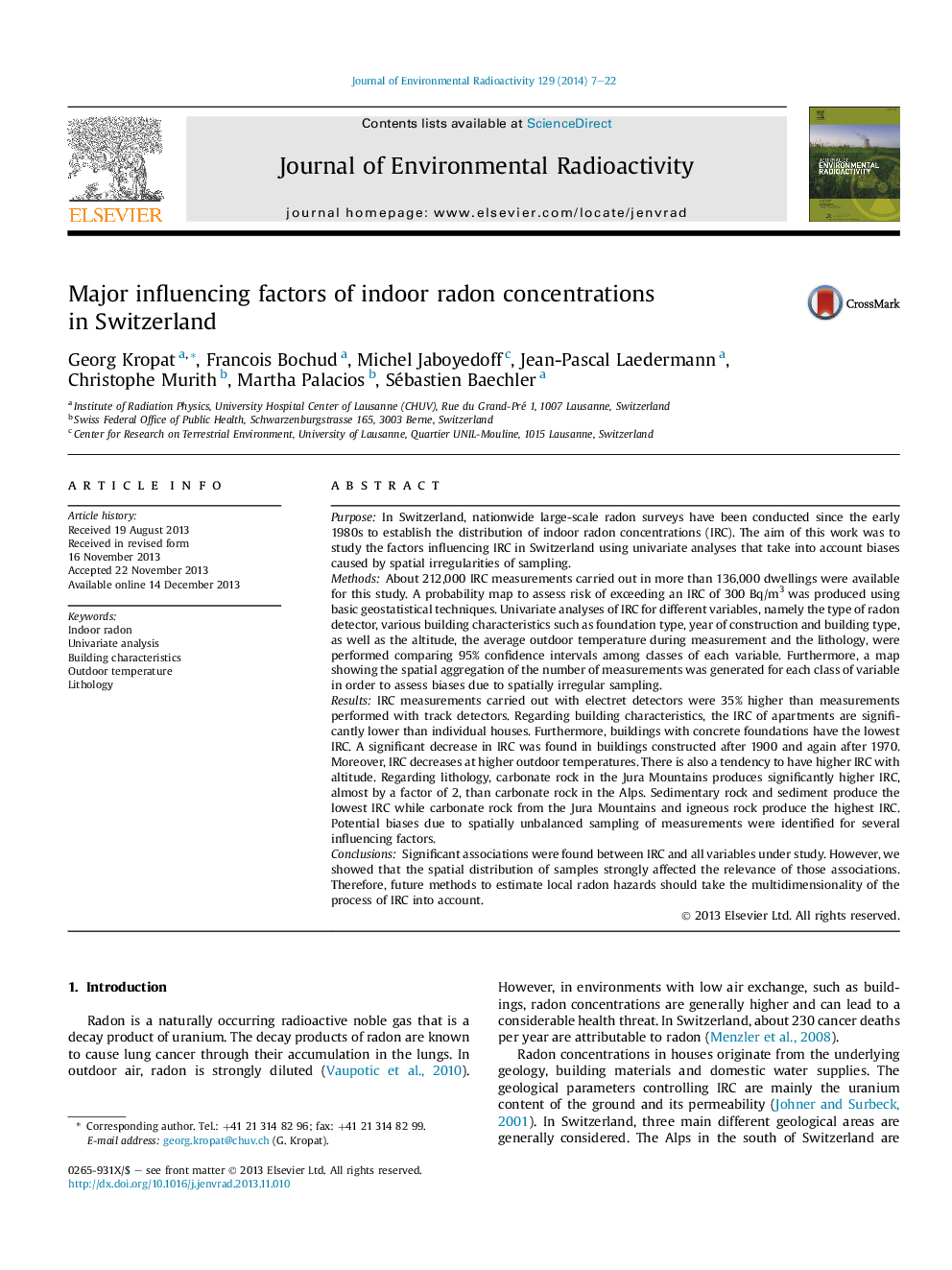| کد مقاله | کد نشریه | سال انتشار | مقاله انگلیسی | نسخه تمام متن |
|---|---|---|---|---|
| 1738064 | 1521604 | 2014 | 16 صفحه PDF | دانلود رایگان |
• We studied the impact of several variables on indoor radon levels in Switzerland.
• Dependence between radon and variables are strongly biased by spatial distribution.
• While igneous rock shows the highest radon concentrations, sediment has the lowest.
• A major decrease in radon was found in houses built after 1900 and again after 1970.
• A map of probability to exceed radon concentrations of 300 Bq/m3 was proposed.
PurposeIn Switzerland, nationwide large-scale radon surveys have been conducted since the early 1980s to establish the distribution of indoor radon concentrations (IRC). The aim of this work was to study the factors influencing IRC in Switzerland using univariate analyses that take into account biases caused by spatial irregularities of sampling.MethodsAbout 212,000 IRC measurements carried out in more than 136,000 dwellings were available for this study. A probability map to assess risk of exceeding an IRC of 300 Bq/m3 was produced using basic geostatistical techniques. Univariate analyses of IRC for different variables, namely the type of radon detector, various building characteristics such as foundation type, year of construction and building type, as well as the altitude, the average outdoor temperature during measurement and the lithology, were performed comparing 95% confidence intervals among classes of each variable. Furthermore, a map showing the spatial aggregation of the number of measurements was generated for each class of variable in order to assess biases due to spatially irregular sampling.ResultsIRC measurements carried out with electret detectors were 35% higher than measurements performed with track detectors. Regarding building characteristics, the IRC of apartments are significantly lower than individual houses. Furthermore, buildings with concrete foundations have the lowest IRC. A significant decrease in IRC was found in buildings constructed after 1900 and again after 1970. Moreover, IRC decreases at higher outdoor temperatures. There is also a tendency to have higher IRC with altitude. Regarding lithology, carbonate rock in the Jura Mountains produces significantly higher IRC, almost by a factor of 2, than carbonate rock in the Alps. Sedimentary rock and sediment produce the lowest IRC while carbonate rock from the Jura Mountains and igneous rock produce the highest IRC. Potential biases due to spatially unbalanced sampling of measurements were identified for several influencing factors.ConclusionsSignificant associations were found between IRC and all variables under study. However, we showed that the spatial distribution of samples strongly affected the relevance of those associations. Therefore, future methods to estimate local radon hazards should take the multidimensionality of the process of IRC into account.
Journal: Journal of Environmental Radioactivity - Volume 129, March 2014, Pages 7–22
